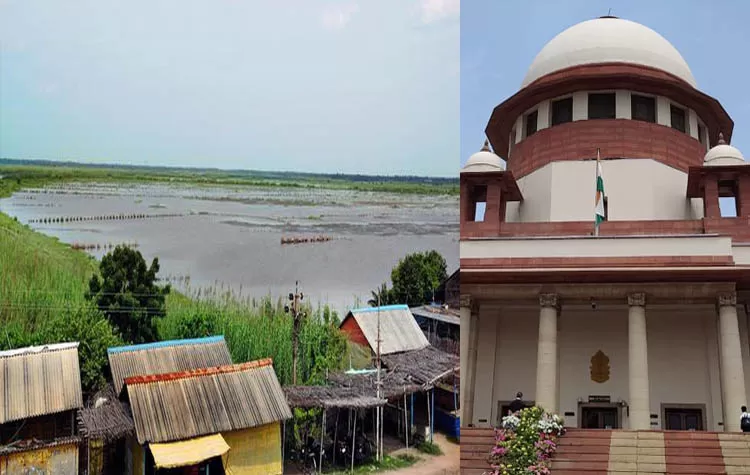
The Supreme Court has directed the Andhra Pradesh government to initiate effective measures to deal with the encroachments on Kolleru Lake. These encroachments hamper water flow and threaten wildlife. The court has issued an order on December 11 last year. The court asked the demarcation of latitude and longitude in the lake, which has to be completed in three months. The court further ordered not to let municipal solid waste, industrial effluents, and sewage be released into the lake.
The court clarified that these measures should not interfere with the livelihood of fishermen and urged the state government to educate them about the orders and ensure compliance. A bench comprising Justices BR Gavai, Augustine George Masih, and K. Vinod Chandran issued these directions while hearing a petition filed by K. Mrityunjaya Rao of Kakinada. The petition sought contempt of court action against officials who failed to implement Supreme Court orders issued on April 10, 2006, aimed at protecting Kolleru Lake.
Fish Ponds to Be Removed Within Time Frame
The Supreme Court emphasized the removal of small and large fish ponds within Kolleru Wildlife Sanctuary. Noting that, as reported by the Central Empowered Committee (CEC) of March 20, 2006, it was clear that all ponds measuring over 100 acres would have to be removed within 15 days and those below that threshold by May 31, 2006, the destruction of the ponds program was originally slated to commence on April 20, 2006. It is based on the above failures on the part of the state to remove the ponds on time that led to contempt of court action being sought.
The court further ordered the state to stop transporting fertilizers that are used in aquaculture within the sanctuary and to enforce all provisions set forth in the CEC report.
Data on Encroachment and Environmental Issues
According to the data given by the Andhra Pradesh government under the Right to Information (RTI) Act, 15,339 acres of Kolleru Wildlife Sanctuary are under encroachment. Though Kolleru Lake covers 901 sq. km., only 308.55 sq. km. is officially designated as part of the wildlife sanctuary. Aquaculture activities currently occupy 6,908.48 hectares, obstructing the lake's natural water flow and disrupting its ecosystem.
The court dismissed pleas seeking protection for investors who developed fish ponds with collector approval. Commercial activities within the sanctuary's boundaries were deemed harmful, as they divert water flow and reduce water levels. The bench ordered a complete ban on such activities and instructed the state to educate farmers opposing the court's directives.
Digital Mapping and Boundary Finalization
The Supreme Court, in its order of December 11, had asked the state government to demarcate the boundaries of the wetlands with proper digital maps within three months. The court pointed out photographic evidence showing that the wetlands were not well maintained and asked the state to rectify the situation.
The state was further directed to submit updates on measures taken to remove encroachments. The bench stressed the importance of proper demarcation and implementation to maintain the ecological balance of Kolleru Lake and protect its wildlife sanctuary status.












